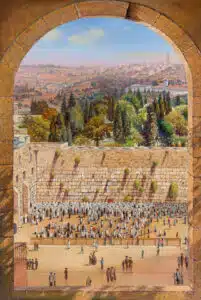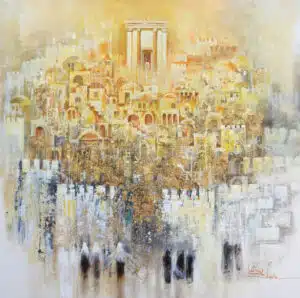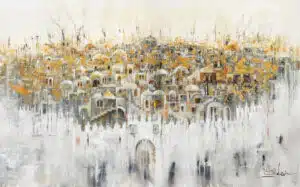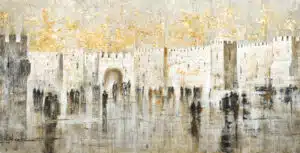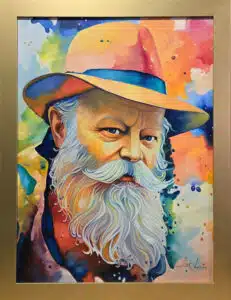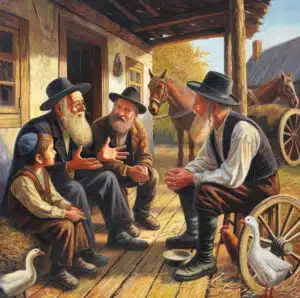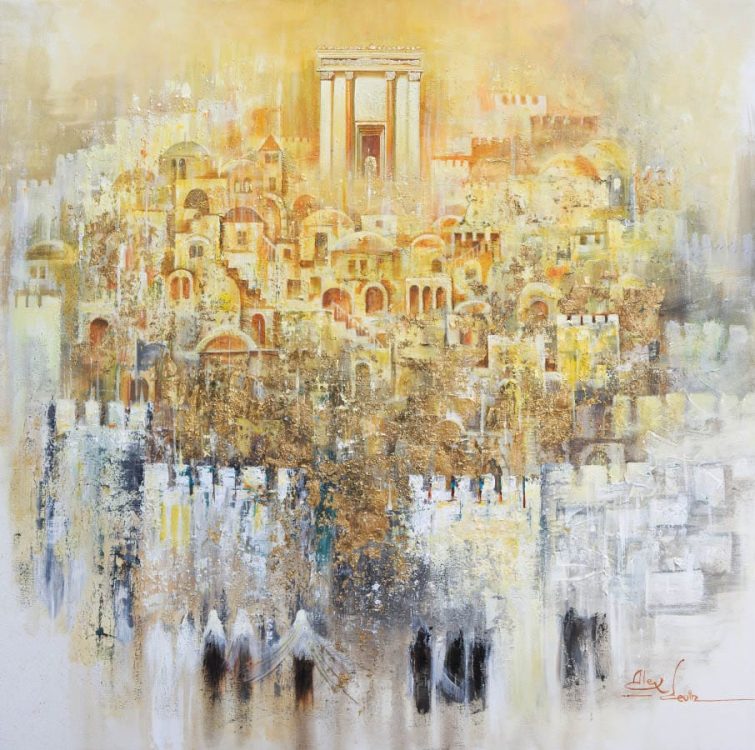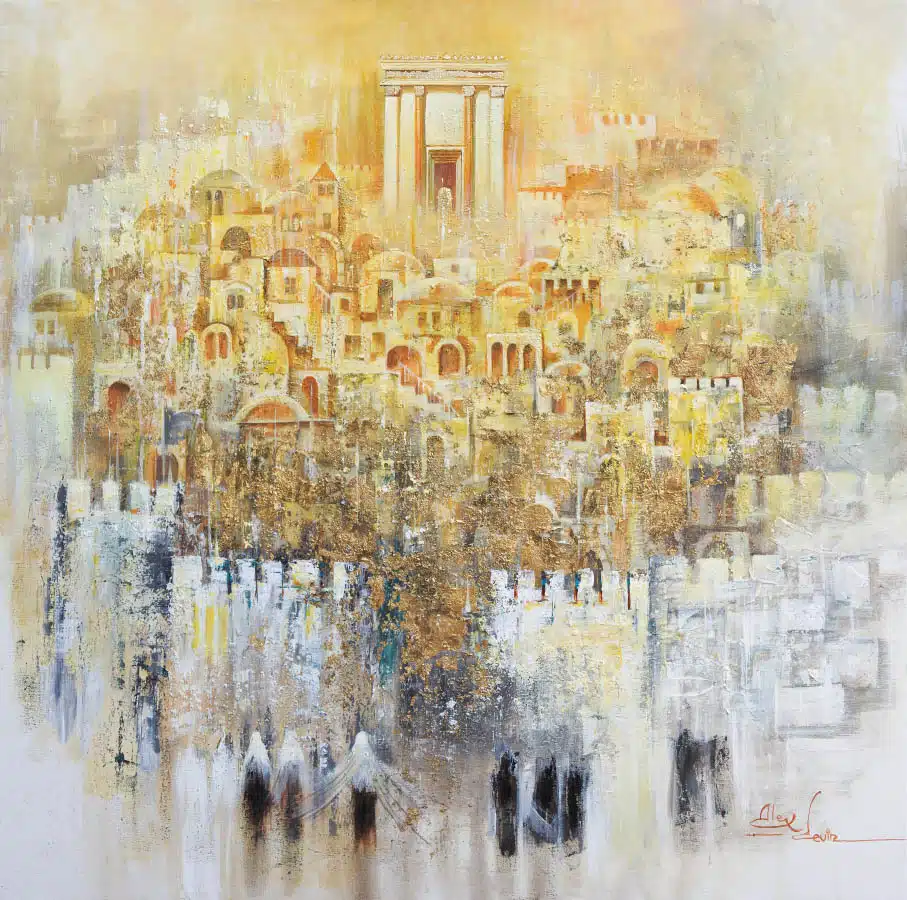
When you walk into a traditional Orthodox Jewish home, you might notice something missing: paintings or figurative art on the walls.
While Jewish art has existed for thousands of years — from illuminated manuscripts to modern Israeli masters — many observant families have historically avoided hanging paintings or portraits in their homes.
Why is that? The answer lies deep in Jewish law, tradition, and spiritual sensitivity, and yet, the story doesn’t end there. Today, artists like Alex Levin are reshaping this relationship — showing how art can become a form of devotion, reflection, and connection to the sacred.
🕍 The Torah’s Teaching: “You Shall Not Make an Image”
The foundation of this tradition begins in the Second Commandment:
“You shall not make for yourself a carved image, nor any likeness of anything that is in heaven above or on the earth below…” (Exodus 20:4)
This verse was meant to protect the Jewish people from idolatry — the worship of physical representations instead of the invisible, infinite God.
For this reason, many rabbis throughout history interpreted it as a call to avoid realistic images of people or divine forms.
While many authorities allow art for beauty, history, or inspiration, traditional Orthodox communities chose to remain extra cautious. Over centuries, this created a deep cultural reflex — a natural avoidance of figurative art in daily life.
📜 From Words to Beauty: The Visual Language of Faith
Instead of paintings, Orthodox Jewish homes have long used written and symbolic art:
-
Hebrew art calligraphy of verses from the Torah or Psalms
-
Mezuzah cases, beautifully crafted but non-figurative
-
Symbolic motifs like the Menorah, Star of David, Tree of Life, pomegranates, or Jerusalem’s skyline
This reflects a core value in Jewish thought: spiritual beauty comes from meaning, not imagery.
The art of faith, therefore, became the art of words.
🕯️ Simplicity, Modesty, and the Holy Home
Orthodox Judaism places great emphasis on tzniut (modesty) — not only in clothing, but in how one lives and designs their environment.
Homes are meant to reflect humility, focus on Torah, and avoid excessive decoration that might distract from inner life and study.
For many families, paintings — especially portraits or romantic or emotional imagery — felt too “worldly.”
Instead, the home itself became a kind of sanctuary, where beauty is expressed through holiness, family, and light — rather than art.
🖌️ The Modern Shift: Jewish Art as Spiritual Expression
In the modern era, however, something remarkable is happening.
Artists like Alex Levin, based in Israel, are creating a new form of spiritual Jewish art — one that honors halacha (Jewish law) while expressing the beauty of faith.
His paintings of Jerusalem, the Western Wall, Hasidic life, and the Lubavitcher Rebbe are not mere decorations — they are visual prayers.
Each brushstroke invites reflection on light, holiness, and the timeless connection between the Jewish people and the Divine.
Rather than portraying “graven images,” Levin’s work captures moments of spirit, not idols — the glow of Shabbat candles, the dawn over the Kotel, or the quiet soul of Jerusalem.
This new direction has opened the door for many Orthodox and Hasidic families to embrace art again — art that uplifts rather than distracts.
🌄 A New Generation of Jewish Homes
Today, more and more observant families display paintings of:
-
Jerusalem bathed in golden light
-
The Kotel aka Western Wall at sunrise
-
Scenes of Shabbat, Torah study, or prayer
-
The Lubavitcher Rebbe and Hasidic inspiration
These are not simply artworks — they are reminders of faith and history, infused with warmth and reverence.
Alex Levin’s art, for example, is found in homes, synagogues, and Jewish centers across the world — bridging tradition and modern beauty in a way that feels authentic, spiritual, and timeless.
✨ In Summary
Orthodox Jewish families historically avoided paintings due to:
-
The Torah’s prohibition against making images (Exodus 20:4)
-
A strong focus on study and modesty rather than decoration
-
Caution against anything resembling idol imagery
But in recent years, a new understanding has emerged — that art can also be a form of worship, memory, and holiness when created with pure intent.
Through artists like Alex Levin, Jewish art is experiencing a renaissance — reconnecting visual beauty with eternal faith.
JEWISH ART
